A father’s Jag-loving spirit lives on through his son and their 1964 Jaguar Mk2
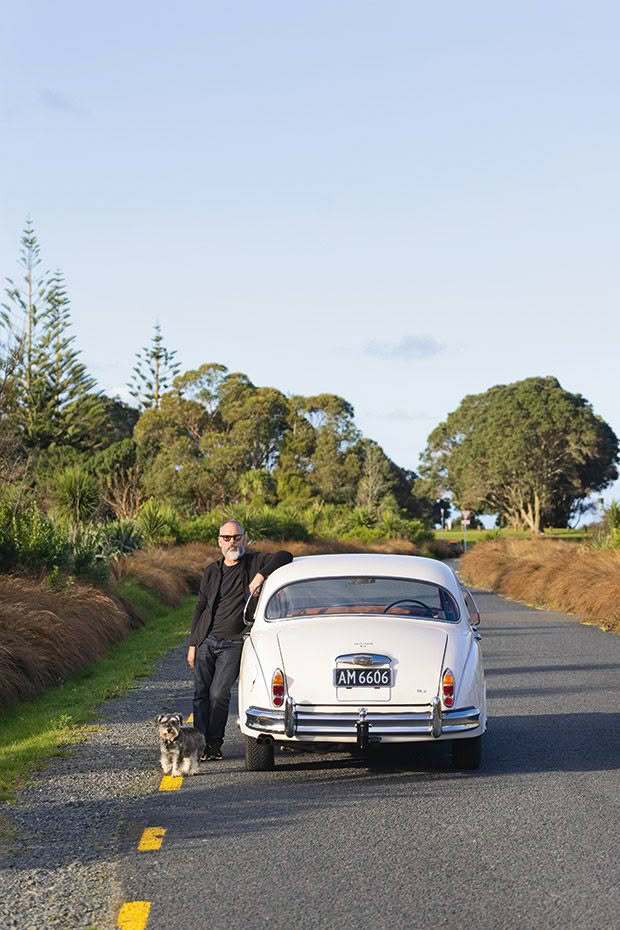
Karl Lagerfeld said of the Jag: ‘It’s an idea of beauty with no standard.’ Scott Wood, who inherited one from his dad, has come to agree.
Words: Jane Warwick Photos: Tessa Chrisp
Lucy Wood is a very small dog in a very big car. There are far bigger dogs — arrogant, haughty nosed with imperious lineages — that would give their canines for Lucy’s seat. But, “whatever”, shrugs Lucy. Despite her jack russell bouncy genes crossed with her miniature schnauzer lead-tugging curiosity, little Lucy Wood is much like her owner used to be regarding his 1964 Jaguar Mk2.
She hops in, curls up on the seat and sleeps, only interested in the destination and not the journey. Not even a peek from the window at the Auckland skyline or an ear lifting in the wind, just snoozing under the swinging ignition key ring decorated with lucky pennies by Rob Wood, a key ring that began with his first car at 15, through to this, his last car as it turns out.
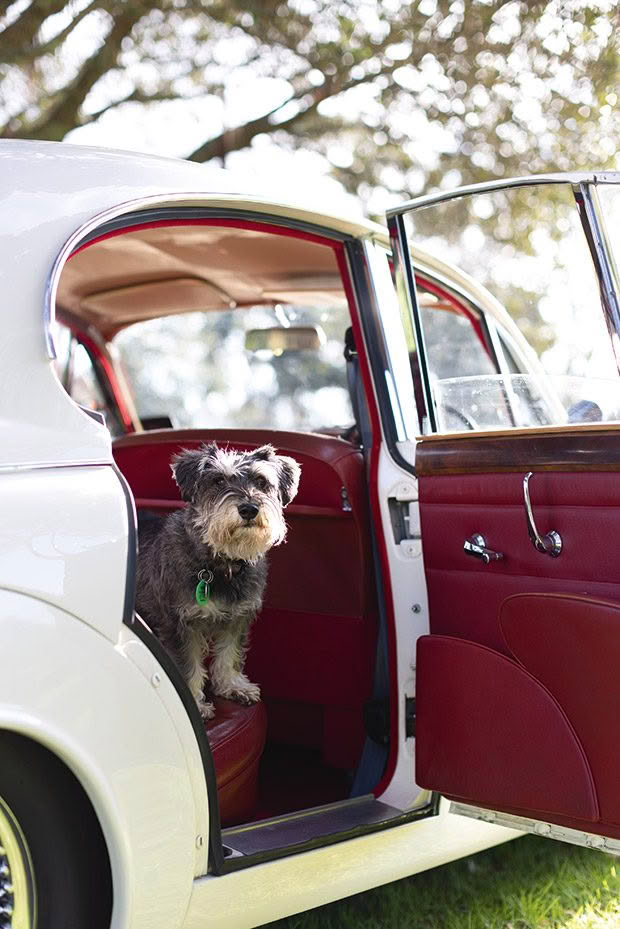
When Scott Wood was a boy, he felt much the same way as his dog does now as he rode around Auckland’s North Shore in the family’s stately blue 1964 Jaguar Mk2, his father Rob’s pride and joy. It was a bit slippers-and-cardigan for Scott, this nearly 1.5 tonnes of best British steel. But Rob, a builder by trade, loved it and even started a sideline hobby sourcing and on-selling Jaguar parts.
With the help of Rob, Scott bought his own car when he was just 14, 50 cubic feet of Morris Minor convertible — a vehicle he still has — that Rob helped him get roadworthy. Later he had a Morris Minor van, a nifty Nissan 260Z and even a Porsche 911 (another vehicle he still has, albeit in bits); compact cars that were more to his taste.
But when his dad passed away a few years ago, Scott — now an auto trimmer — kept Rob’s current Jaguar, also a 1964 Mk2, although this one is white. He kept it more as a memento of a man well-loved than as a vehicle he would use, and it sat in a shed at Scott’s automotive upholstering business in Coatesville, just north of what was once Rob’s typical beat, evoking only memories, not exhaust.
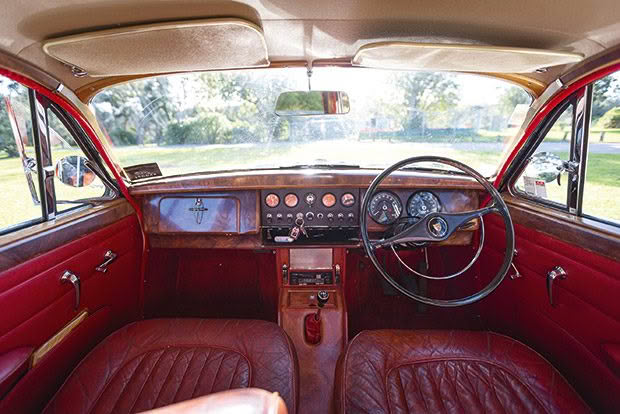
Scott has original letters that show the vehicle had been a new-buy in Christchurch, and the owners had traveled throughout New Zealand towing a caravan. “It must have been a rather large caravan,” muses Scott, “as the car was fitted with a connection to run airbrakes on a caravan, not bigger brakes on the Jag. But the car came to a sticky end on a trip to Auckland, where it was damaged and on-sold by the insurance company. Dad bought the wreck and repaired it in 1985 at his brother’s panel shop in Browns Bay [Auckland].”
Rob used the car only on clement days and mostly around Auckland, but there was the odd road trip, his daughter’s wedding, and the weddings of a couple of friends. Its WOF lapsed.
But then Scott met Jenny, and it was decided that the vehicle simply had to be their wedding car, so the push was on. There must have been a few fraught moments and maybe
some domestic dramas because it wasn’t until 17 November 1995 that the car finally earned a warrant. Scott will never forget that date because his wedding was on the 18th, the next day.
And then, oddly, that was it for a while. The car got taken out for a wash and a run up the road, and as parts got worn, they got harder to replace. Then something went askew with the brakes, and Rob took the car to that space in Scott’s Coatesville shed, where it languished for more than 20 years. Rob fully intended to fix it, but life got in the way, and the car just became part of the shed, really. And then Rob was gone, and the Jaguar was Scott’s.
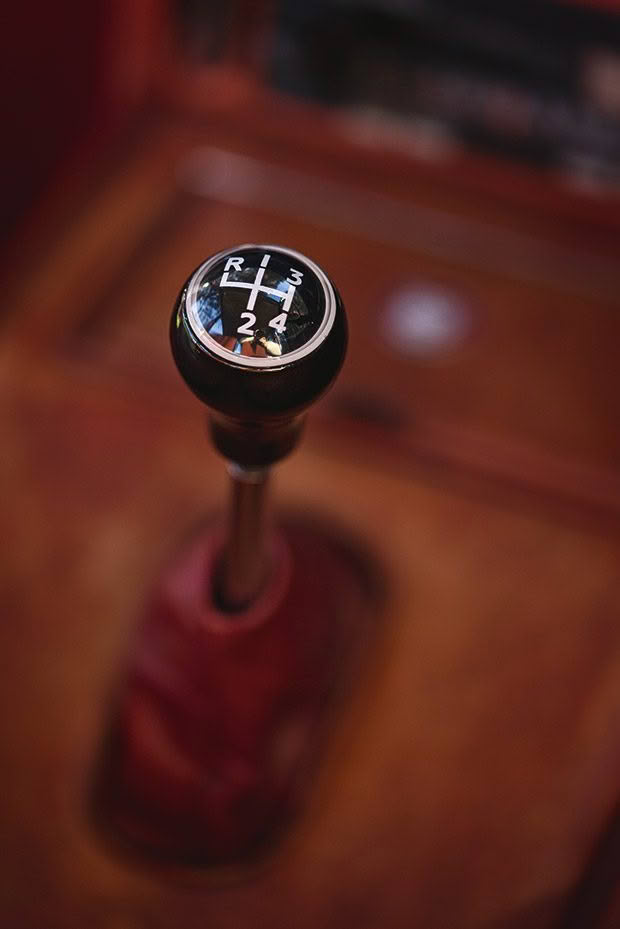
“It wasn’t my cup of tea,” says Scott, “but it’s one thing to keep it and quite another to ignore it. I noticed the rubber had perished around the windscreen and the headlining was grubby, but a car is only original once, right?
“Nearly everything else in the car was original or was an original fitting repaired, not replaced. It would be a great shame for those original parts to deteriorate to a state where they couldn’t be saved or restored but instead had to be totally replaced. So I needed to make an effort before that happened.”
Scott pulled out the windscreens and replaced the rubber, replaced the headlining and while he was doing so — maybe it was nostalgia, maybe Rob was looking over his shoulder, perhaps it was just that old Jag smell of leather seats and real wood trim — the car got under his skin.
He fell in love with it — the hidden map lights under the dash, the four internal lights and, the best thing of all, the sound of the famous XK Jaguar twin-cam engine. He finally saw what his father saw; he finally felt what his father felt.
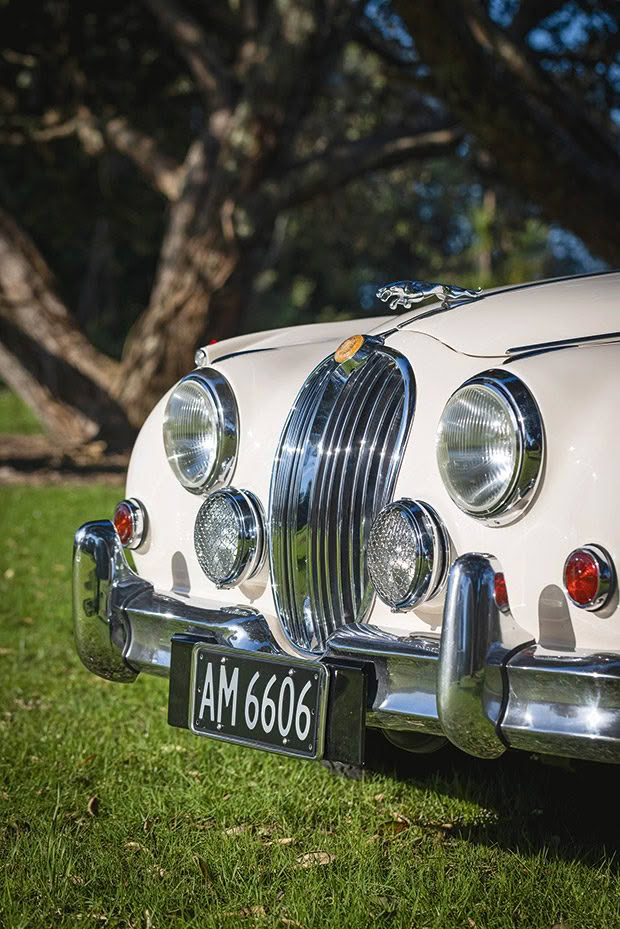
Scott thought he would have to fix the brakes, take it for a WOF, and that would be that, but the car wasn’t cooperating. “I started it, and it ran beautifully for five minutes. Then a valve stuck down and bent, and a whole can of worms opened. So, the engine came out, we painted the engine bay, put in new brakes, exhaust, clutch, rebuilt the gearbox, and repainted the whole car.
“All the mechanical work — and lots of other stuff — was done by my friend and Jag expert, Peter [too shy to be named]. Without his help, the Jag would still be in the shed. My skills as an automotive upholsterer meant I could finish and fit new carpets and headlining and another friend re-lacquered the burr walnut woodwork.
“The radio has real history too. I remember Dad swapping an Austin A35 he had just got running for the right Jaguar radio.” Scott recalls the happy swapper leaving a radio and taking the Austin. It seemed like a good deal to both parties. And all up, it took four years to get the car roadworthy again.
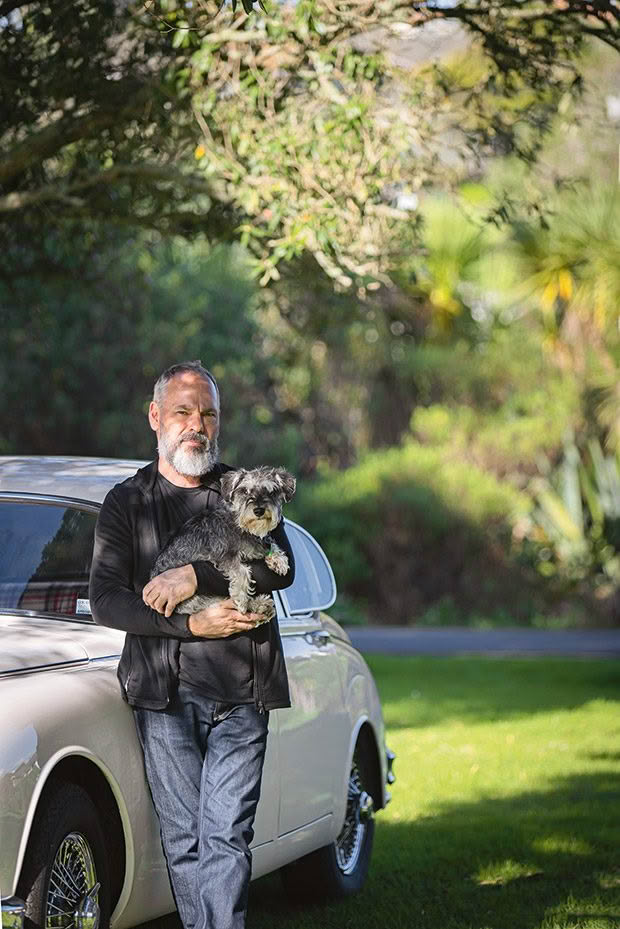
There’s no power steering, but it’s a better drive than many other cars Scott has driven. The gearbox, too, is a bit of a challenge compared with the nearly seamless transmissions of today. There isn’t any aircon but — what the heck? — roll those windows down. And the headlights? Well, they’re of the era.
Now that it’s roadworthy again, Scott has vowed to keep it that way. He’s found that it is a surprisingly nice car to drive on twisty roads, and he loved the winding trip to the recent Beach Hop at Whangamatā, although the regal Brit did stick out among the brasher American marques there. Restoring the Jaguar was a good trial run for his current project, a Mercedes 300TE 86.
Famed designer Karl Lagerfeld said that “Jaguars are such nice cars” and that of the marque, “It’s an idea of beauty with no standard”. Which is probably an observation that even the apparently heedless Lucy would raise a paw to unless she finds out that Lagerfeld left a considerable chunk of his multi-million-dollar fortune to his cat. Then she might feel obliged to withdraw the paw.
JAGUAR’S XK ENGINE
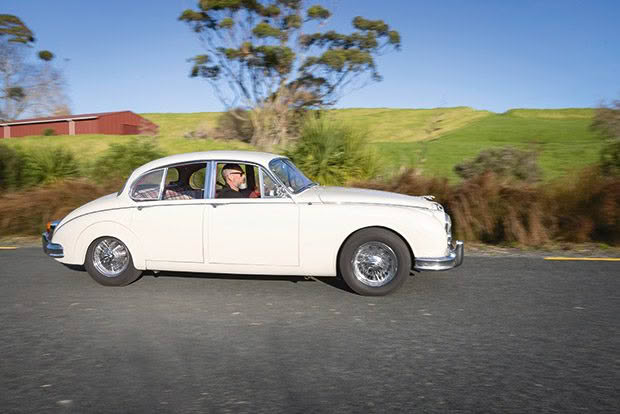
The XK engine was Jaguar’s first true in-house design with advanced features such as a twin overhead camshaft and hemispherical combustion chambers, making it among the most high-tech power plants of its day. The 3.4-litre engine was fitted to the marque’s Mk7 saloon in 1950 and was rated at 160bhp, offering 195lb/ft of torque. It was particularly successful in the E-type, Mk2 and XJ Jaguar models. No wonder that as the fastest four-door car in Britain — 97 kilometres an hour in 8.5 seconds — the Mk2 was the getaway car of choice for bank robbers across England. Not to be outdone, the same model was the patrol car of choice for the British police.
Love this story? Subscribe now!
 This article first appeared in NZ Life & Leisure Magazine.
This article first appeared in NZ Life & Leisure Magazine.
